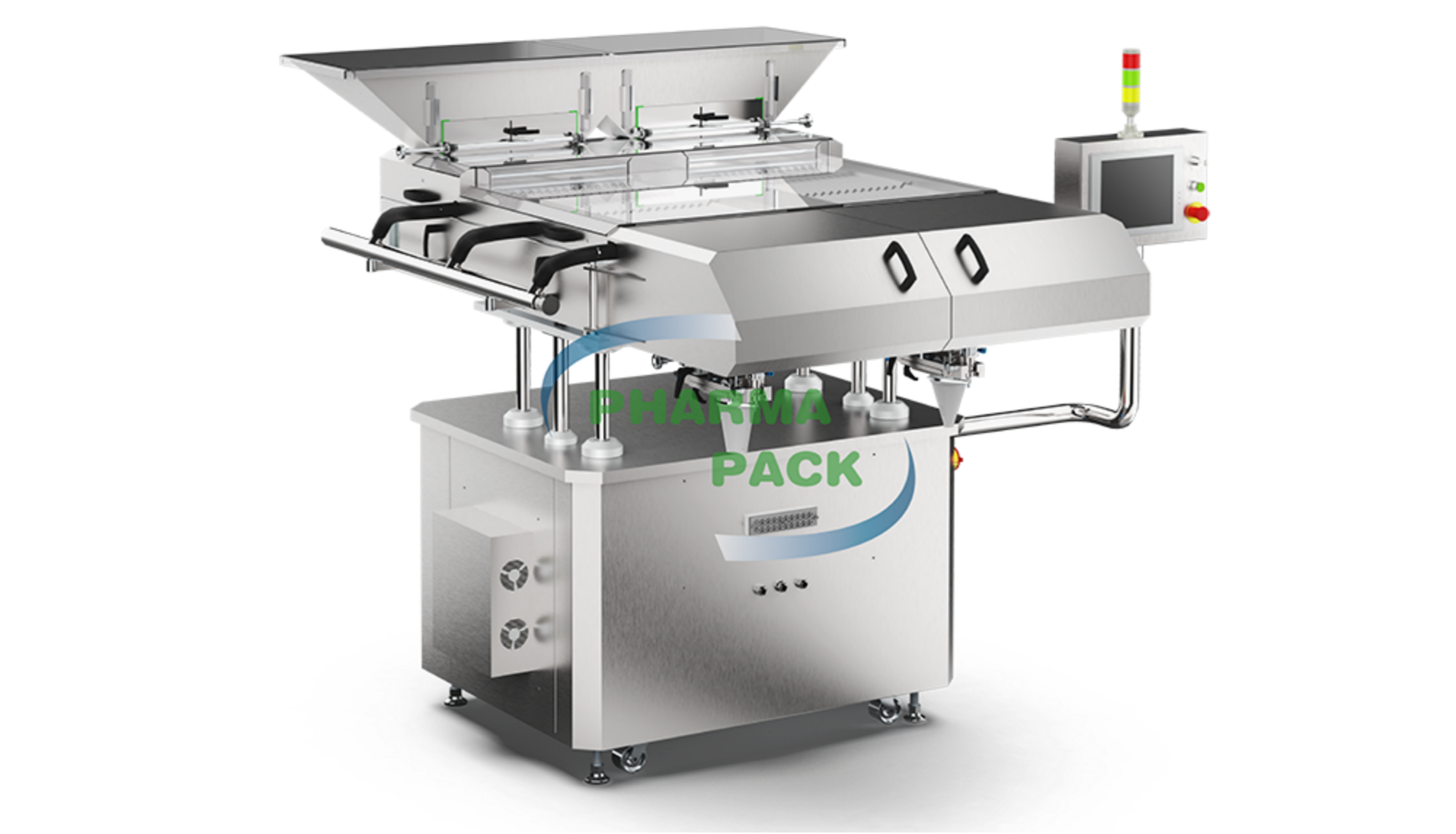

Accurate tablet counting and filling play a crucial role in pharmaceutical production, directly impacting dosage accuracy, contamination prevention, and patient safety. Ensuring that each bottle or blister pack contains the correct number of tablets is not just a matter of efficiency but also a regulatory requirement enforced by agencies such as the FDA and EMA.
Beyond compliance, precision in tablet counting enhances operational efficiency, minimizes waste, and maintains the integrity of pharmaceutical brands. Errors in tablet counting can lead to costly recalls, regulatory penalties, and reputational damage. Implementing best practices helps ensure smooth operations, high product quality, and adherence to strict pharmaceutical standards. This article explores five best practices that can help pharmaceutical manufacturers improve both the accuracy and efficiency of their tablet counting and filling processes.

Choosing the appropriate tablet counting and filling machine depends on the production scale and required accuracy. The most common types include:
Automatic Tablet Counters: Designed for high-speed operations, suitable for large-scale production with minimal manual intervention.
Modular Counters: Flexible and scalable solutions that can be customized based on production needs, allowing manufacturers to upgrade capacity as required.
Electronic Tablet Counters: Utilize advanced sensors and optical technology for precise counting, reducing errors and ensuring consistency.
When selecting a tablet counting machine, manufacturers should consider:
Counting Speed: Ensuring it aligns with production demand without compromising accuracy.
Precision: Reducing dosage errors and ensuring regulatory compliance by preventing under- or over-counting.
Material Compatibility: Ensuring the machine can handle various tablet sizes, shapes, and coatings without causing breakage or inconsistencies.
Integration with Packaging Lines: Facilitating seamless production flow and synchronization with other equipment.
Future-proofing operations requires selecting a machine that can adapt to:
Increased production demands as business grows.
Evolving regulatory requirements to maintain compliance.
Integration with future automation technologies to improve efficiency and traceability.
Regular calibration prevents miscounts and dosage discrepancies. Steps include:
Using certified reference tablets for calibration checks to ensure accurate sensor readings.
Adjusting sensor sensitivity based on tablet properties such as size, weight, and coating.
Conducting routine accuracy verification tests to maintain optimal performance.
Preventive maintenance reduces downtime and prolongs equipment life. Key tasks include:
Daily Cleaning: Removing dust and residue to prevent contamination and operational inefficiencies.
Weekly Inspections: Checking sensors, conveyor belts, and vibratory feeders for wear and tear.
Periodic Part Replacement: Ensuring components such as nozzles and counting trays are in optimal condition to prevent mechanical failures.
Common challenges and their solutions include:
Double Counting: Adjusting optical sensors and software settings to refine accuracy.
Machine Jams: Ensuring proper tablet flow and eliminating obstructions to maintain continuous operation.
Sensor Failures: Regularly testing and replacing faulty sensors to avoid miscounts or production slowdowns.
Automation enhances production by:
Increasing speed: Faster tablet processing reduces bottlenecks and improves output.
Reducing human error: Automated precision minimizes miscounts, ensuring every package meets dosage requirements.
Improving traceability: Automated systems maintain detailed batch records, ensuring compliance and simplifying audits.
Advanced tablet counting machines now incorporate AI-driven features, such as:
Real-time data analysis: Predicting and preventing counting errors through machine learning algorithms.
Quality control automation: Detecting and rejecting defective tablets before they reach packaging.
Self-adjusting sensors: Optimizing performance based on production conditions, reducing manual intervention.
Pharmaceutical manufacturers must comply with:
FDA (Food and Drug Administration) regulations: Ensuring dosage accuracy, contamination control, and patient safety.
EMA (European Medicines Agency) guidelines: Adhering to stringent pharmaceutical packaging requirements for international markets.
GMP (Good Manufacturing Practices): Maintaining high production standards to guarantee product integrity and quality.
To maintain product integrity, manufacturers should implement:
Inline inspection systems: Detecting broken tablets, foreign particles, and under-filled packages before sealing.
Automated reject mechanisms: Ensuring only defect-free products reach the final packaging stage.
Batch sampling protocols: Conducting periodic checks to verify consistency across production runs.
Complying with regulatory data requirements involves:
Electronic batch records: Ensuring compliance with 21 CFR Part 11 for secure and auditable data management.
Barcode and RFID tracking: Enhancing supply chain visibility and ensuring product authenticity.
Audit trail maintenance: Keeping a secure log of production data for quality assurance and regulatory review.
Tablet counters should be integrated with:
Bottle fillers: Ensuring smooth tablet transfer to containers while minimizing spills.
Cappers and labelers: Streamlining final packaging with automated sealing and branding.
Inspection systems: Maintaining quality control at every stage of packaging.
Optimizing the production line involves:
Minimizing bottlenecks: Ensuring equipment synchronization to prevent slowdowns.
Balancing machine speeds: Matching counting rates with filling speeds for seamless operation.
Utilizing predictive maintenance: Preventing unexpected downtimes with AI-driven monitoring and alerts.
Proper staff training enhances:
Operational efficiency: Reducing setup and transition times for new production runs.
Machine troubleshooting skills: Equipping operators with knowledge to resolve common issues promptly.
Regulatory compliance awareness: Ensuring adherence to industry standards and best practices.
We at Pharmapack provide cutting-edge tablet counting and filling solutions that:
Utilize advanced sensor technologies for high accuracy and reliability.
Offer modular designs for scalable production, ensuring adaptability.
Integrate seamlessly with existing packaging lines to enhance efficiency.
Pharmapack ensures:
Full compliance with global pharmaceutical regulations, maintaining the highest standards.
Continuous innovation in AI-driven quality control to minimize errors and maximize productivity.
Reliable customer support and training programs to help manufacturers optimize operations.
We at Pharmapack have successfully assisted pharmaceutical manufacturers in:
Enhancing production accuracy while reducing material wastage.
Improving efficiency through automation and seamless workflow integration.
Achieving regulatory compliance with ease, ensuring a trusted reputation in the industry.
Implementing these five best practices—selecting the right machine, maintaining proper calibration, integrating automation, adhering to regulations, and optimizing workflow—ensures accuracy and efficiency in tablet counting. By prioritizing precision, automation, and compliance, pharmaceutical manufacturers can enhance productivity while safeguarding patient health. Investing in high-quality counting and filling systems, like those offered by Pharmapack, is essential for long-term success in the pharmaceutical industry